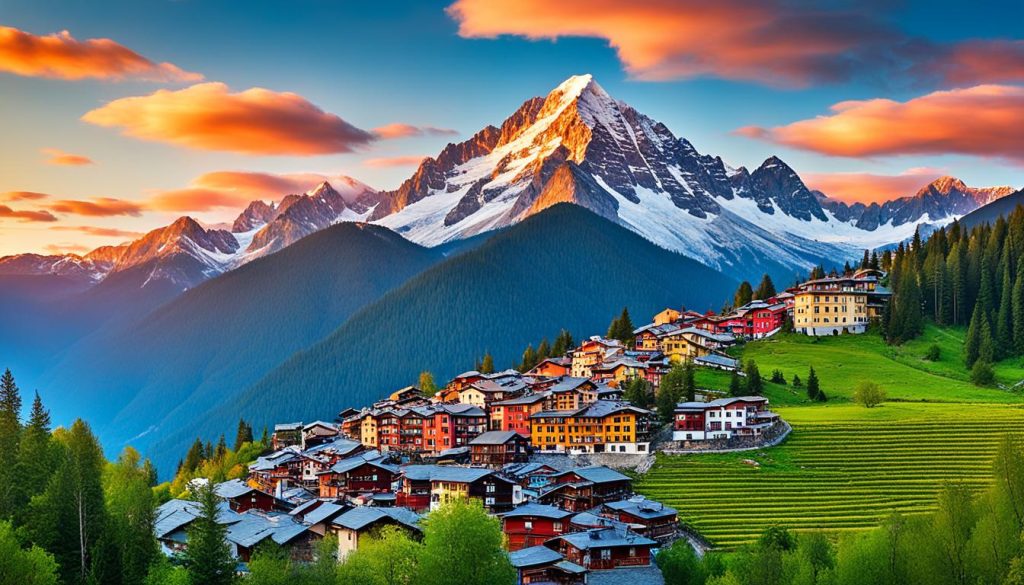Imagine if melting lead predicted our future. Think about celebrating the new year with 108 bells. Picture turning your wishes into ashes. Welcome to a world filled with enchanting customs from every corner. Each country tells its own captivating tale through its traditions that have been with families for ages1. Let’s dive into this adventure. We will explore breathtaking traditions from across the globe. This journey offers a peek into the deep roots of human culture.
The stunning Himalayan peaks and the vibrant turquoise lakes of Patagonia invite us. These places are not only visually spectacular but also vital for the world’s ecosystem1. They host half of Earth’s biodiversity hotspots. 30% of Key Biodiversity Areas reside here1. In these high places, nature, faith, and human creativity blend seamlessly. We will discover unique traditions in these places. They offer unforgettable adventures for those who seek them.
Key Takeaways
- Discover the captivating cultural traditions that make each country unique.
- Explore the rich history and significance behind these time-honored customs.
- Gain a deeper appreciation for the diversity of global heritage and its role in a globalized world.
- Uncover the natural wonders and high-altitude adventures that inspire these traditional practices.
- Embark on a journey that will broaden your perspective and ignite your sense of wonder.
The Enchanting World of Cultural Traditions
The heart of a country’s identity is found in its mix of cultural traditions. We’re lucky, as travelers, to dive into the varied customs and ways that define our global community. Cultural tourism gives us a peek into the unique living fabric of each place2.
Exploring the Beauty of Diverse Customs and Practices
Japan’s serene temples in Kyoto and the wild beauty of Patagonia, stretching over Argentina and Chile, are just the start2. Around the globe, you can see the cleverness and creativity of people through their cultural traditions. Whether you visit historic sites, join in local festivals, or pick up traditional crafts, each experience adds a new layer to your view of the world3.
Why Cultural Heritage Matters in a Globalized World
Today, with globalization moving fast, saving cultural heritage is more crucial than ever. Cultural traditions help us feel who we are and where we belong. They also help places stay lively and healthy for the future. By caring for these special ways, we respect the history and ensure the future knows the beauty of the world’s variety3.
Set out on a heritage travel and uncover the wonders of the world. From the grand Himalayas to the warm beaches in the tropics, you’re in for stories that will change you forever24.
“Preserving cultural heritage not only safeguards our shared history but also transforms destinations into thriving, culturally enriched attractions, contributing to their long-term sustainability.”
| Destination | Cultural Highlight |
|---|---|
| Bhutan | Monasteries and spiritual traditions |
| India | Adventure and cultural exploration |
| Africa | Safaris beyond wildlife viewing |
| Europe | Architecture, art, heritage, wine, and gastronomy |
| Central America | Diverse experiences comparable to a continent |
| South America | History, nature, culture, cuisine, and adventure |
| Oceania | Diverse and wild landscapes |
| North America | Contrasts, from mountains to vibrant cities |
| Middle East | High cultural heritage and ancient cities |
| Polar Regions | Epic frozen landscapes and exhilarating adventures |
| Asia | Kaleidoscopic cultures, traditions, and natural wonders |
| Japan | Ancient traditions, futuristic technology, and natural beauty |
| Indonesia (Bali) | Modern amenities with cultural heritage |
| Sri Lanka | Beaches, cuisine, and friendly locals |
| Thailand | Beaches, cultural treasures, and temple-filled cities |
| Vietnam | Cuisine, including the popular pho noodle dish |
When planning your next trip, think about surrounding yourself with the world’s cultural richness. From the snowy Himalayas to the crystal-clear Maldives, the chance for cultural discovery is vast234.
Germany: Predicting the Future with Molten Lead
In Germany, the special tradition of Bleigießen means melting lead or tin. People look at the shapes they make in water5. It’s a fun yet mysterious way to look into the year ahead. Germans see what the shapes of the metal pieces tell about the next year. It makes New Year’s Eve more exciting and magical for them.
Bleigießen has been part of German New Year’s for many years. They use a bit of Lithium because it’s a bit more common than lead in the Earth.
People melt small lead or tin shapes, hoping for good things in the new year. When they pour water over the hot5, they watch the shapes that form. It’s like a unique way of telling fortunes.
| Bleigießen: Shapes and Their Meanings |
|---|
|
The shapes made by the melted metal are thought to predict the future. This makes the tradition very interesting to Germans. They love seeing what might happen in the new year through this unique method.
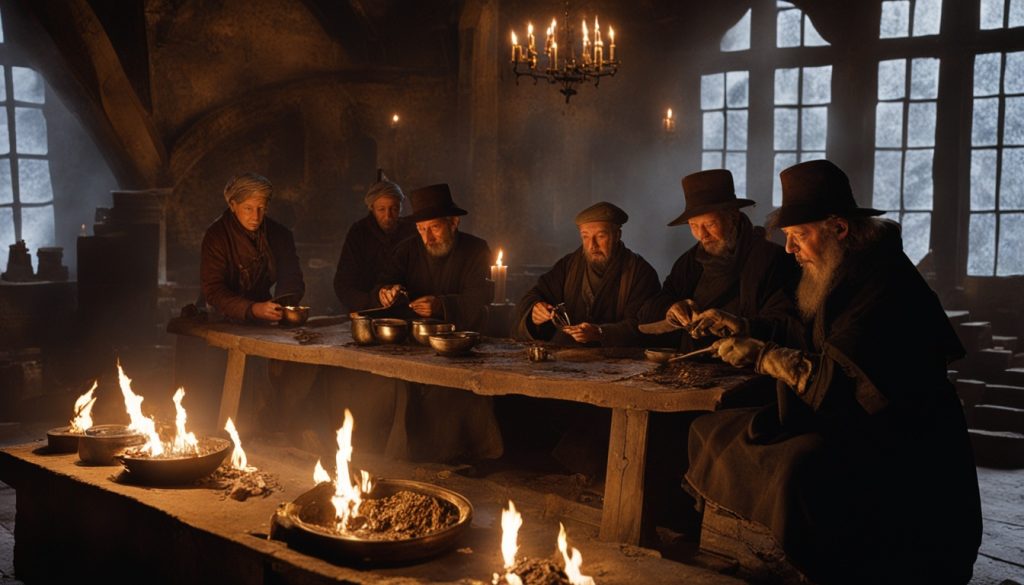
“This tradition combines old customs with new hopes, making the start of each year both exciting and full of mystery.”
Japan’s Mesmerizing Bell Ringing Ceremony
As New Year’s Eve nears midnight in Japan, a special tradition takes place. Temple bells ring in a ritual called “joyanokane.” It’s about cleansing the soul and looking forward to a fresh start in the new year6.
The Symbolism and Spirituality of Joyanokane
In the joyanokane ceremony, temple bells ring slowly 108 times. This enacts the 108 human desires that lead to suffering7. On December 31st, the first 107 rings occur. Then, at midnight, the 108th ring starts the new year7. This act isn’t just symbolic. It brings a spiritual feeling as the bells’ sounds fill the night, creating a peaceful presence.
Rooted in Japanese Buddhism, the 108 bell rings offer soul purification7. They mark a new beginning, a time to leave past hardships behind and welcome the chance for renewal7.
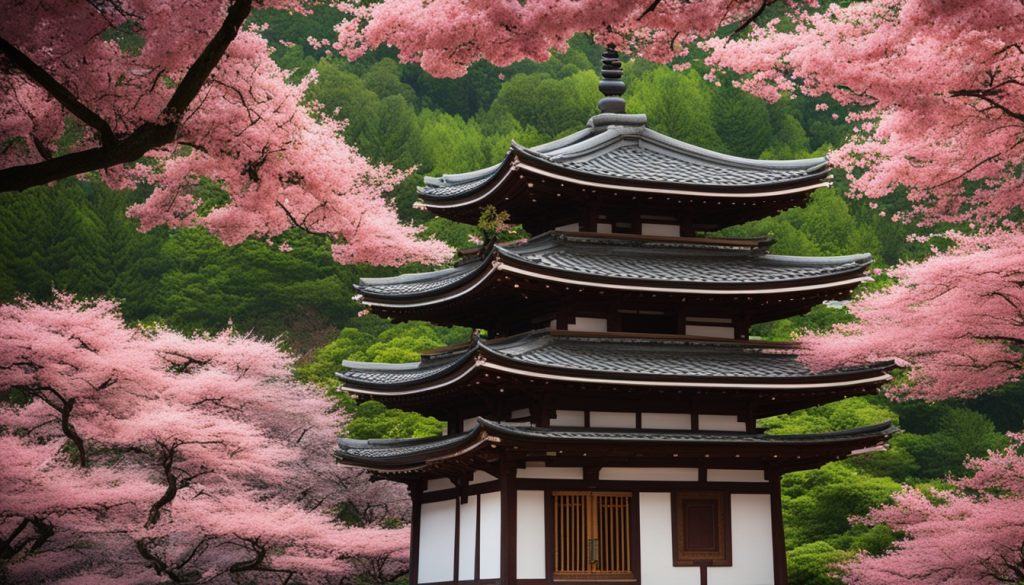
Temples and shrines throughout Japan partake in this moving tradition. In places like Nara’s Todaiji Temple and Chion’in in Kyoto, visitors can even ring the bells7. At these locations, many people are needed to get the large bells moving7.
This ceremony is a highlight of Japan’s New Year. It shows the nation’s respect for the spiritual and its desire for a fresh start8. With the last bell sound, a deep calm spreads. It marks the new year and the hope for spiritual growth and inner peace.
Russia’s Tradition of Wishes Turned to Ashes
At midnight on New Year’s Eve in Russia, the excitement is high. They have a ritual called “Zhelanie.” It’s a special way to welcome the new year and say goodbye to the old9.
People write their wishes on a small paper and fold it. Then, they burn the paper. After that, they mix the ashes with champagne. This action shows how they place their dreams and wishes into the new year’s start9.
This burning of wishes is very symbolic. They believe the ashes will bring their hopes to the new year. By doing this, they start the year feeling positive and hopeful about what’s to come9.
It’s a tradition deeply tied to Russia’s culture and its love for rituals. When they clink their champagnes, it feels like they are welcoming a brighter time. The mix of ashes and drink is full of optimism and promise9.
For Russians, this tradition means a lot more than a party on New Year’s Eve. It shows their strong spirit and their trust in making wishes. They see this as a chance to share their dreams for the upcoming year. For them, it’s a deep part of their culture9.

“The Zhelanie tradition is a powerful reminder that even in the face of adversity, the human spirit can find solace in the simple act of making a wish and believing in its fulfillment.”
Czech Republic: Unveiling Fortunes with Apples
In the Czech Republic, on New Year’s, cutting an apple in half is more than just a tradition10. It’s a way to predict what the year will bring. By looking at the core pattern, people think they can see hints of the future10.
A star-shaped core brings joy and optimism for the year ahead10. This custom shows how much Czechs value nature and are curious about what’s to come10. It mixes old traditions, beliefs, and a bit of fun all in one10.
The shape of the core means different things. A cross means something good will come from each direction. And a heart means the year will be full of love and joy10. Counting the seeds might even tell you about the future family10.
Czechs have many other New Year luck traditions10. For luck, they throw coins in fountains and leave bread and coal on windowsills. They also use evergreen branches to wish for a prosperous year ahead10.
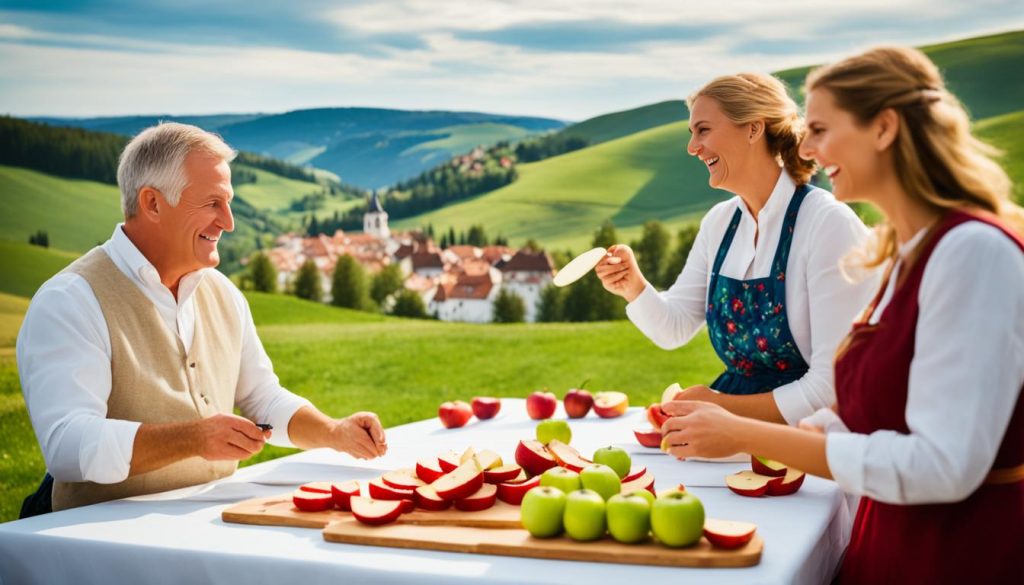
The apple-cutting tradition is just one part of Czech culture10. It shows how their beliefs and customs are deeply tied to nature. As the New Year nears, this ritual brings excitement and shows the lasting joy old customs can bring10.
Estonia’s Feast for Prosperity and Strength
As the new year comes, Estonians start a meaningful culinary tradition. This tradition marks their heritage and hopes for the future11. They eat up to twelve meals on New Year’s Eve. It is believed each meal brings the strength of twelve men for the next year11. This shows how much Estonians value food and aim for a prosperous and lasting future.
They serve many dishes, showing their deep trust in symbolic power11. This tradition links eating more to being stronger and resilient for the next year. It roots deeply in Estonian culture, honoring their land, its gifts, and the strong spirit of its people.
| Tradition | Symbolism | Significance |
|---|---|---|
| Twelve-meal custom | Strength and endurance | Belief that the more one consumes, the more resilient they will be in the new year |
| Abundant feasting | Prosperity and abundance | Commitment to ensuring a bountiful and prosperous future |
| Reverence for sustenance | Reverence for the land and its bounty | Celebration of Estonian cultural heritage and enduring spirit |
Estonian New Year’s feasting mixes rich symbols, heritage, and belief in well-being and lasting power11. At the year’s start, these many meals show Estonians’ strong commitment. They look forward to a future full of fortune, strength, and persistence.

Armenia’s Bread: Kneading Hopes for the New Year
The Significance of Baking Traditions
Armenia values bread-making as a sacred tradition before the New Year. They mix their hopes with the dough, showing deep meaning behind each loaf12. For Armenians, bread symbolizes life, community, and the unbroken thread of culture through generations.
The making of New Year bread, lavash, goes beyond cooking. It’s a heartfelt ritual at home, bringing in new chances for abundance and freshness13. Each bread piece is filled with the family’s dreams for the future, making it more than just food but a symbol of hope.
Lavash, a widespread Armenian flatbread, is at the heart of many homes13. Families use a traditional oven called tonir for baking. This method isn’t just about making food. It’s living a tradition that links Armenians with their past and feeds not only the body but also the spirit.
The sweet scent of lavash marks the start of the New Year in Armenia12. This act of baking isn’t just a task; it’s believed to shape the upcoming year. It shows Armenians’ deep respect for their culture and their strong ties to traditions.
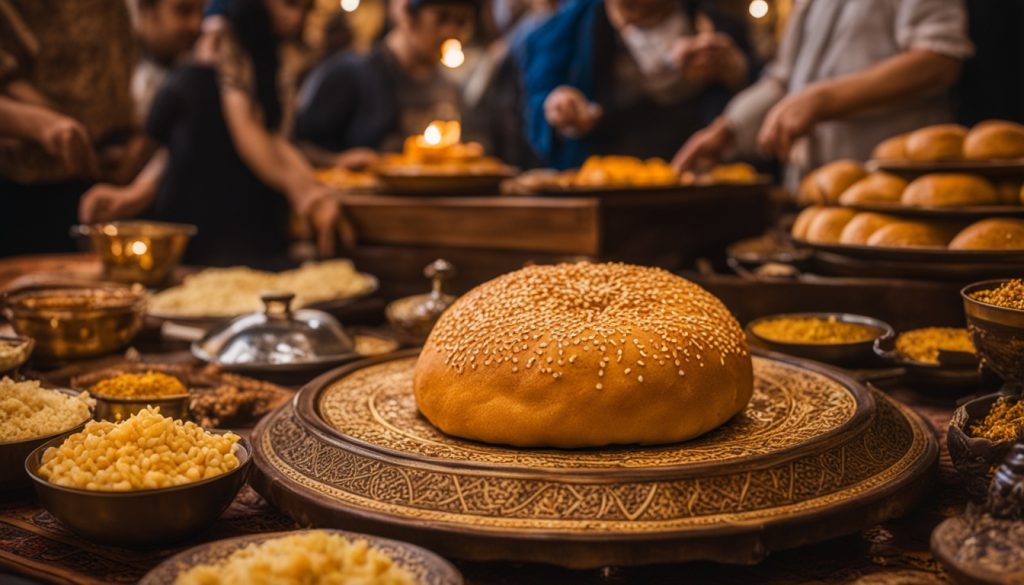
“Bread is the staff of life, and lavash is the staff of life in Armenia. It’s not just a food, it’s a way of life.”
Turkey’s Salty Beginnings for Peace and Prosperity
When the clock strikes midnight on New Year’s Eve in Turkey, a unique tradition begins. Families all over sprinkle salt on their doorsteps. This simple act is thought to invite peace and wealth for the upcoming year. It’s a tradition that shows the deep cultural roots and the belief in the power of small, meaningful actions14.
The choice of salt for this ritual is meaningful. In Turkish customs, salt stands for cleanliness and preserving good luck. Starting the new year like this shows a wish for a happy and successful future. It also connects modern celebrations with the wisdom of the past14.
Apart from its symbolical meaning, this ritual highlights the family’s importance in Turkey. Families do this act together as the new year arrives. It strengthens their connection and underlines the idea that a happy, prosperous home is key for a strong community14.
The salt ritual isn’t just a passing tradition. It is a practice carried on through ages. By keeping this tradition alive, Turkish people respect their culture. They also show their commitment to values like unity, strength, and community, elements that have always been at the core of their society14.
| Key Facts about Turkey | Details |
|---|---|
| Geographical Size | Turkey occupies a landmass over 750,000 km2 (290,000 sq mi), larger than Germany and slightly more than Texas14. Turkey has a surface area of 814,578 square kilometers15. |
| Biodiversity | Turkey possesses about 10,000 plant species, one-third of which are endemic14. Turkey is home to over 19,000 invertebrate species, with 4,000 endemic to the region15. |
| Population | Turkey’s population is estimated at 85.3 million in 202314. |
| Geographical Regions | Turkey is divided into seven geographical regions: Eastern Anatolia, Southeastern Anatolia, Central Anatolia, Black Sea, Marmara, Mediterranean, and Aegean15. |
| Iconic Landmarks | Ani, in Turkey, is known for the ruins of the medieval Armenian capital14. Cappadocia is famous for its unique moon-like landscape and cave churches14. Ephesus boasts well-preserved ruins of a Graeco-Roman city14. Mount Nemrut is designated as a UNESCO World Heritage site14. |
| Cultural Identity | Turkey is considered a mix of West and East cultures, with the Islamic faith predominant in Turkish culture, and varying interpretations across regions14. |
With each new year, the salt sprinkling ritual in Turkey reminds us of the strength of cultural traditions. It brings a promise of peace, wealth, and community. By keeping this ritual alive, Turks celebrate their history and welcome a future bursting with hope and togetherness14.

Spain’s Twelve Grapes of Luck
At midnight on New Year’s Eve in Spain, a special tradition takes place. People eat twelve grapes, one for each month of the year. It’s a fun way to look forward to the future16.
This tradition started in the late 1800s. There was a big crop of grapes, so farmers needed to sell them. To get people to eat more grapes, they made eating them a New Year’s tradition16. Now, it’s a big part of New Year celebrations in Spain. Families and friends join in together, hoping for good luck in the coming year.
Embracing the Symbolism of Grapes
The twelve grapes symbolize luck for each month. It’s a cheerful way to start the New Year. This tradition makes everyone feel hopeful16.
Spain’s New Year’s celebration also includes other fun things. For example, people wear red underwear for luck. They may also throw money into the street. Making wishes as they eat the grapes is also common. These activities add to the festive atmosphere16.
Participating in the grape-eating tradition is a highlight in Spain. It brings people together. It symbolizes the nation’s hopeful spirit16.
| Destination | Highlights |
|---|---|
| Bérchules |
|
| La Coruña |
|
To really experience Spain, join in the New Year’s grape tradition. It’s a unique way to understand Spain’s culture. Plus, it’s fun and hopeful for everyone1618.

“The twelve grapes of luck are a beloved part of our cultural heritage, representing the individual months and instilling a sense of anticipation and resilience as we welcome the new year.”
Denmark’s Leap into the New Year
In Denmark, there’s a special tradition for New Year’s Eve. People jump off chairs at midnight. This is seen as bringing good luck into the new year19. It shows their excitement to leave the past year and move into the future confidently. For them, jumping symbolizes renewal and a determination to face new challenges boldly.
Tivoli Gardens in Denmark is well-known for its New Year’s fireworks. This 5-day show ends with a big display on New Year’s Eve19. It attracts many, creating a feeling of togetherness as they welcome the new year. It’s a beautiful way to say goodbye to the old year.
Aside from chair jumping, the Danes have another interesting tradition. They break dishes on friends’ doorsteps as a sign of friendship19. It’s a fun way to wish for a year full of good friends. This act means they want to begin the year with strong bonds.
“Jumping off chairs at midnight is a symbolic leap into the new year, representing our collective hope for a fresh start and a prosperous future.” – Mette Frederiksen, Prime Minister of Denmark
In the whole of Scandinavia, cities come to life on New Year’s Eve. Places like Oslo, Copenhagen, Stockholm, and Helsinki welcome lots of people19. The celebrations include fireworks and music. They share a feeling of community, hope, and excitement for a new year.

When the new year begins, Danes jump off their chairs. It’s a way of starting fresh, full of hope. This tradition is a chance to leave past troubles and look forward with optimism19. It’s more than a fun moment. It’s a strong symbolic act about hope and new beginnings.
Brazil’s Oceanic Offerings to the Sea Goddess
At midnight on New Year’s Eve, Brazilians head to the shores to honor Iemanjá, the sea goddess20. This amazing event, the Festa de Lemanjá, brings millions each year. People wear all white and bring flowers to honor the goddess of the ocean20.
Brazil’s bond with nature runs deep in its culture21. By giving presents to Iemanjá, they show respect for the sea’s life-giving power. This highlights how Brazilians see a balance between people and nature. They mark this connection every New Year22.
Honoring Nature’s Blessings
The Festa de Lemanjá tells a lot about Brazil’s love and respect for the sea20. People from all over come to the beach. They bring beautiful flowers, candles, and more to honor Iemanjá and the sea22. The shores turn into a sea of white as visitors reflect in peace.
More than a custom, this rite shows Brazilians’ special tie with nature21. By showing respect to Iemanjá, they aim to be in tune with nature’s powers. Brazilians draw on the sea’s vast energy for strength and ideas22.
“The ocean is not just a body of water; it is a living, breathing entity that sustains and nurtures us. By honoring Iemanjá, we are acknowledging the role that nature plays in our lives and seeking her blessings for the year ahead.”
After celebrating into the night, Brazilians leave the beaches enriched and connected20. The Festa de Lemanjá isn’t just any New Year’s ritual. It points to the lasting value of cultural traditions and the big role nature has in our lives222021.
Scotland’s First-Footing Tradition
On Hogmanay, as the clock hits midnight, Scotland’s “first-footing” custom takes center stage. It’s believed that the first person to step into a home sets the year’s tone23.
Usually, the “first-footer” is a tall, dark-haired man. He brings gifts like coal, shortbread, or a wee dram of whisky. These presents stand for warmth, food, and luck, showing the wish for a fruitful year23.
This tradition in Scotland is ancient and has lasted for centuries. Amazingly, Scots didn’t widely celebrate Christmas for over 300 years because it was illegal from 1640. In the 1950s, this changed, and with it, the welcome of the New Year and the first-footing ritual continued23.
Scotland is known for several unique customs around Hogmanay. In Orkney, there’s the Kirkwall Ba’ Game on Christmas and New Year’s Day. It’s a five-hour event with roots that go back around 300 years23. Another event is the Stonehaven Fireballs ceremony, which involves 45 people swinging fireballs. This tradition dates back about 150 years23.
By keeping traditions like first-footing, Scots honor their past and show their love for community and sharing. They believe such practices bring luck and plenty for the New Year. For more fascinating insights about Scotland’s special Christmas and New Year, click here23.
“The first-footer should be a tall, dark man, as it is believed that a dark-haired, tall visitor will bring good luck for the coming year.”
Just as 12 o’clock strikes, start the New Year with Scotland’s first-footing and be part of a tradition that shares warmth, food, and luck. Find the best spots in Scotland to visit during winter to truly enjoy this wonderful custom. For tips, check out this guide24.
| Scottish Winter Highlights | Details |
|---|---|
| Average Winter Temperatures | 5°C (41°F) to 7°C (45°F)24 |
| Record Low Temperatures | -27.2°C (-16.96°F) in the Scottish Highlands24 |
| Major Winter Festivals | St Andrews Day, Hogmanay, and Burns Night24 |
| Popular Day Trip Destinations | Stirling Castle, Loch Lomond, and Trossachs24 |
| Ski Resorts in Scotland | Cairngorm Mountain, Glencoe Mountain, Glen Shee, Nevis Range, and The Lecht24 |
| Sled Dog Centre | The UK’s only working sled dog centre is located in Aviemore24 |
| Scottish Highlands Winter Tour | 3 day/2 night package with prices starting from £215, including accommodation and breakfast24 |
The Scottish Highlands turn magical in winter, offering visitors a dreamland of activities and sights. Plan your winter trip to experience its unique traditions and natural wonder. For more, visit this website25.
- The Highlands area was named as one of National Geographic’s “Best of the World” destinations in 202325.
- Inverness Airport offers flights to destinations across Europe, including several London airports25.
- There are various cycle routes in the Highlands that provide a blend of open spaces, forests, and quiet roads25.
- The Highlands have a local bus network connecting towns and villages, like Inverness, Fort William, and Aviemore25.
- Railway stations in the Highlands include Fort William, Wick, Thurso, Carrbridge, and Kingussie25.
- Inverness train station serves as a central hub for reaching most places with rail services in the Highlands25.
- The Highlands have driving routes like the NC500 and SnowRoads Route for scenic exploration25.
- The A9 road links Inverness to southern Scotland, with Glasgow and Edinburgh approximately 3 hours away25.
- The west coast of Scotland is reachable via the A86 and A82 roads to Fort William, while the A96 links Inverness to Aberdeen on the east coast25.
Celebrate Scotland’s Hogmanay with its enchanting customs and the first-footing tradition. It’s a special way to welcome a year full of luck and blessings23.
Philippines: Embracing Circles of Prosperity
In the Philippines, celebrating the new year is more than fireworks and parties. It’s a rich display of tradition that aims for wealth and prosperity. The ceremonies focus on circles, a symbol of never-ending time and the constant gift of plenty26.
At midnight on New Year’s Eve, Filipinos gather round fruits. There are 12, each for a month. Choices like grapes, oranges, apples, and melons look like coins to bring hopes of financial security for the year26.
This circle theme continues as people wear polka dots and carry coins. They wish to welcome prosperity. By following nature’s cycles, they believe they can influence their own luck26.
These customs show the respect Filipinos have for their past and their joint wish for a better year. They spring from old wisdom. These acts show their hopes for money security, growth, and the gift of plenty27.
The Philippines is more than 7,100 islands; it’s a place of many cultures. The round fruit custom is a great example. It’s part of their traditions, passing from one generation to the next27.
From the busy Manila to the serene Baguio City, Filipinos celebrate with circles. These shapes are key in their New Year’s events2627.
At the start of the year, the Philippines shines as an example of strong traditions. It shows how traditions and hopes for the future beautifully fit together272628.
Mountain travel destinations: Exploring Rugged Peaks and Breathtaking Vistas
For those who love adventure, the world’s mountain destinations are perfect. They let you see amazing views and challenge yourself by climbing. With each mountain comes a unique journey, whether you want to reach the top or follow a trail.
The mountains in North America, Europe, and everywhere else are waiting for you. They offer different adventures, like climbing the Rockies, exploring the Andes’s beauty, or the calm of the Appalachians. Every region has its charm and trails just waiting to be walked.
If you dream of climbing high mountains or prefer an easier walk, there’s something for you. Visit places like Yosemite to see beautiful mountains or explore Denali’s wild lands. You can also relax in Colorado’s Rocky Mountains. The options for high-altitude adventures are endless.
Each mountain region offers incredible experiences. These places will make you love nature even more. So, wear your hiking shoes, take your camera, and prepare for a life-changing elevated hiking experience.
| Mountain Destination | Key Highlights |
|---|---|
| Grand Teton National Park | Spans about 485 square miles, offering ample hiking trails and outdoor exploration opportunities29. |
| Great Smoky Mountains | The most visited national park in the U.S., attracting millions of visitors annually for activities like hiking and camping29. |
| Denali National Park | Home to Denali, the highest peak in North America at 20,310 feet, located within the Alaska Range29. |
| Yosemite National Park | One of three national parks in the Sierra Nevada range, offering wildlife sightings and stunning views29. |
| The Cascades | Feature Mount Rainier as the highest peak at 14,411 feet and Mount Saint Helens as an active volcano29. |
| Uinta Mountains | Rich in natural lakes and streams, with over 1,000 lakes and 400 miles of streams, attracting fishing enthusiasts29. |
| Olympic Mountains | Include Mount Olympus as the highest peak reaching 7,980 feet, primarily set within Olympic National Park29. |
| Blue Ridge Mountains | Extend from Pennsylvania to Georgia, offering a range of outdoor activities, including the scenic Blue Ridge Parkway and Shenandoah National Park29. |
| Santa Lucia Range | Known for its picturesque views in California’s Big Sur region, offering scenic drives and hiking opportunities29. |
| Adirondack Mountains | A year-round destination for skiing, foliage viewing, and outdoor activities like kayaking and hiking in New York29. |
| Sawtooth Mountains | Provide diverse outdoor adventure opportunities like hiking, rock climbing, camping, kayaking, and mountain biking in Idaho29. |
| Bighorn Mountains | Offer biking, camping, hiking, and fishing opportunities at Bighorn National Forest, including Cloud Peak Wilderness as a scenic area in Wyoming and Montana29. |
| White Mountains | Offer a range of outdoor activities such as hiking, camping, tramway rides, gondola rides, vintage railroads, and more in New Hampshire and Maine29. |
From the Swiss Alps to Banff National Park, the world’s mountains are full of adventure30. If you love hiking or just admiring the view, these spots offer unforgettable experiences. They showcase nature’s power and beauty like no other.
“The mountains are calling, and I must go.” – John Muir
From Yosemite’s wild lands to the beauty of state parks, the U.S. has many mountain destinations. It doesn’t matter if you’re a beginner or an expert, there’s a trail for you. So, grab your gear and prepare for a journey that will amaze you.
https://criminalinjurylaw.com/legal-conspiracy-theories-how-the-system-is-rigged-against-victims-6/
Conclusion: Celebrating the Diversity of Global Traditions
Every tradition in the world shows us global cultural diversity31. For example, Germany has lead pouring, and Japan has bell ringing. Each country’s way of celebrating the new year tells us about its deep culture. Understanding these traditions helps us see how similar we all are. But it also shows the beautiful differences that make every culture special.
Start the new year by exploring other cultures32. Dive into the rich variety of global traditions. Doing so creates a rich mix of old and new. This way, you make memories and learn from others. Enjoy connecting with different ways of life. Let these experiences teach you about the world.
Caring about cultures is crucial today33. Keeping traditions alive helps us stay connected as a global family. How? By respecting what makes each culture’s traditions special. So, as you journey into the new year, let the world’s traditions lead your path. May they bring you moments of learning and joy.
FAQ
What are some of the most unique cultural traditions explored in the article?
The article looks at unique cultural traditions worldwide. For example, it talks about Germany’s “Bleigießen” where people melt lead to see shapes, Japan’s “joyanokane” where they ring temple bells, and Russia’s “Zhelanie” involving wishes on paper. They burn these and mix the ashes with champagne.
How do these cultural traditions reflect the diversity of global heritage?
The traditions in the article show just how diverse human culture is. Think about the Czech Republic’s apple-cutting or Estonia’s big feasts. Even Brazil has a tradition of offering flowers to the sea goddess Iemanjá. These traditions highlight the world’s rich and varied cultural tapestry.
Why is it important to explore and preserve cultural traditions in a globalized world?
Exploring and keeping cultural traditions alive is crucial. They give us a sense of belonging and connection. This is especially important in today’s global society. By protecting these traditions, we maintain our history. We also ensure that places stay culturally vibrant, which helps them survive in the long run.
What are some of the breathtaking mountain travel destinations mentioned in the article?
Aside from cultural traditions, the article will also cover stunning mountain travel spots. It mentions high-altitude adventures, alpine trails, and mountaineering. Expect to hear about places with breathtaking views and unique cultures, perfect for adventure seekers.
How do the mountain travel destinations complement the exploration of cultural traditions?
Mountain travel is a way to witness incredible natural beauty. It’s a chance for self-discovery and to face challenges. At the same time, you can learn about the cultural riches of these high places. It combines nature, adventure, and fascinating traditions.

